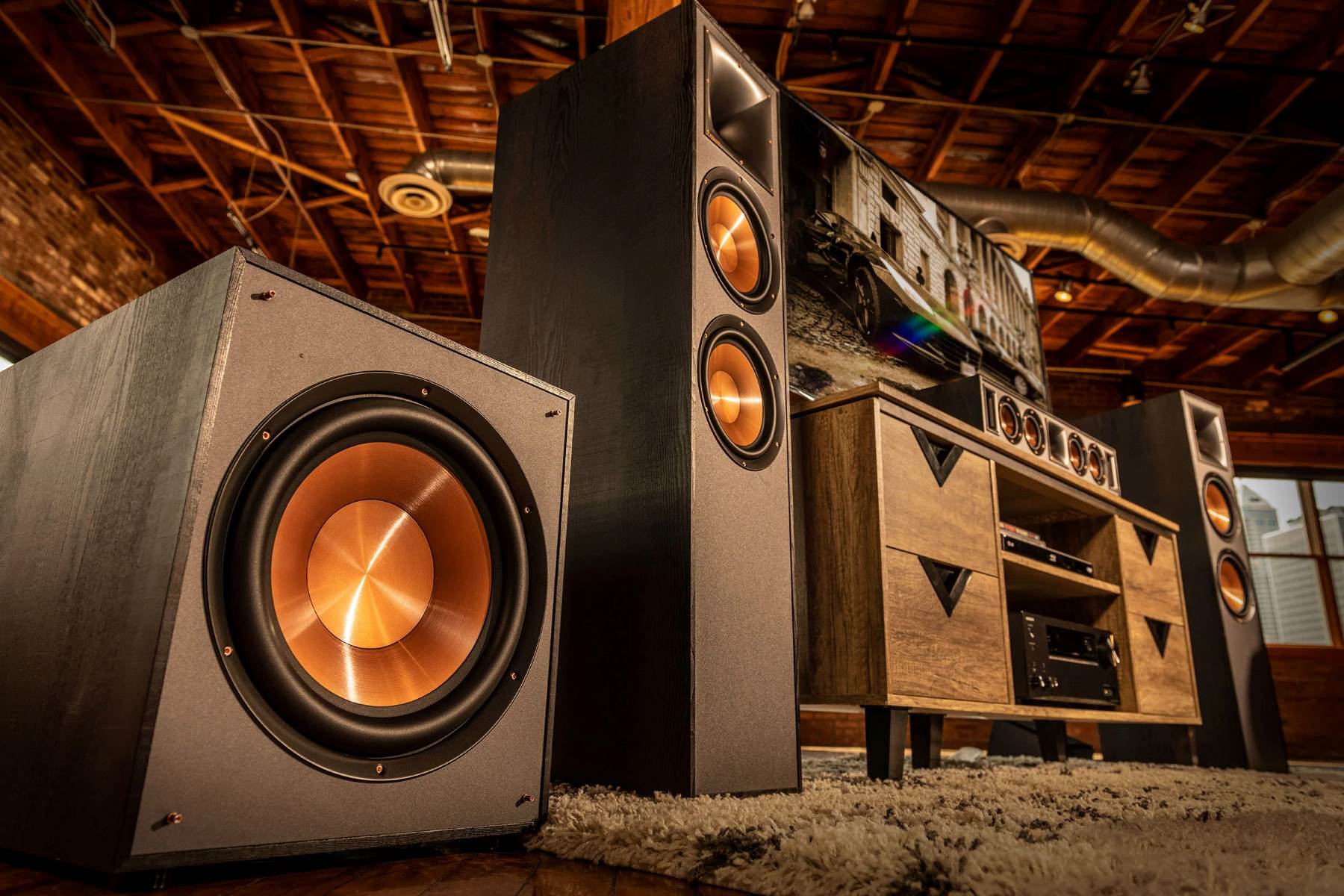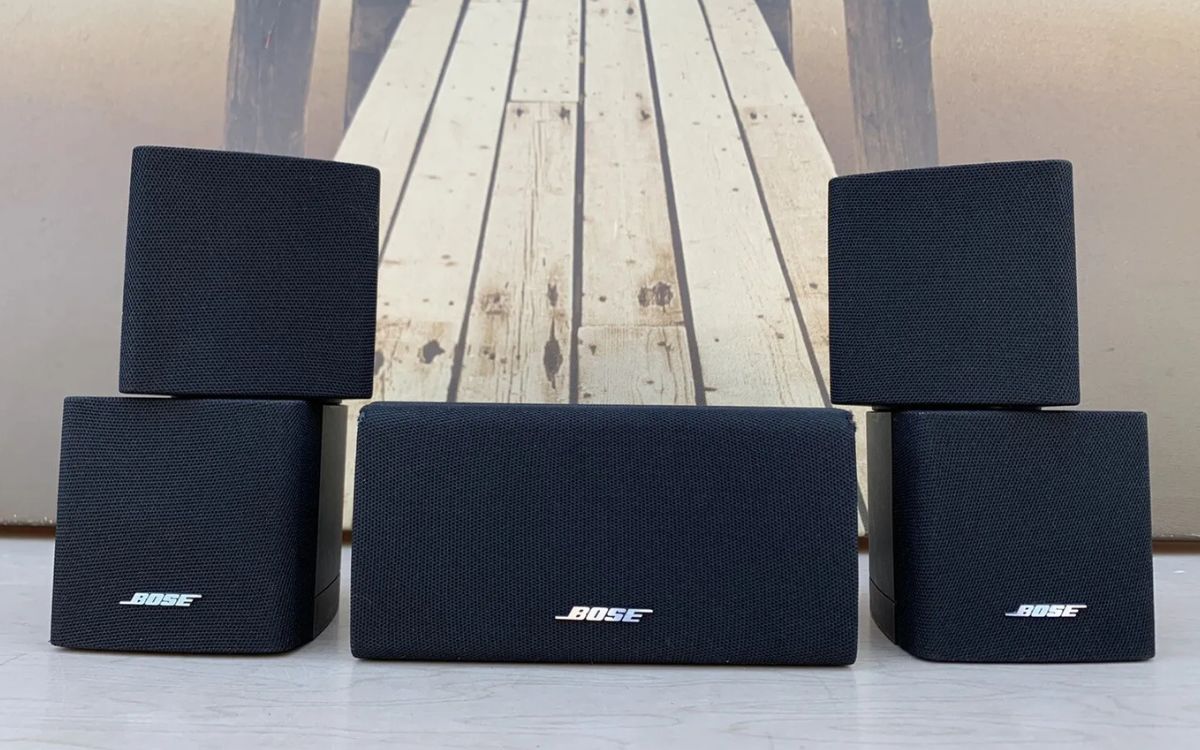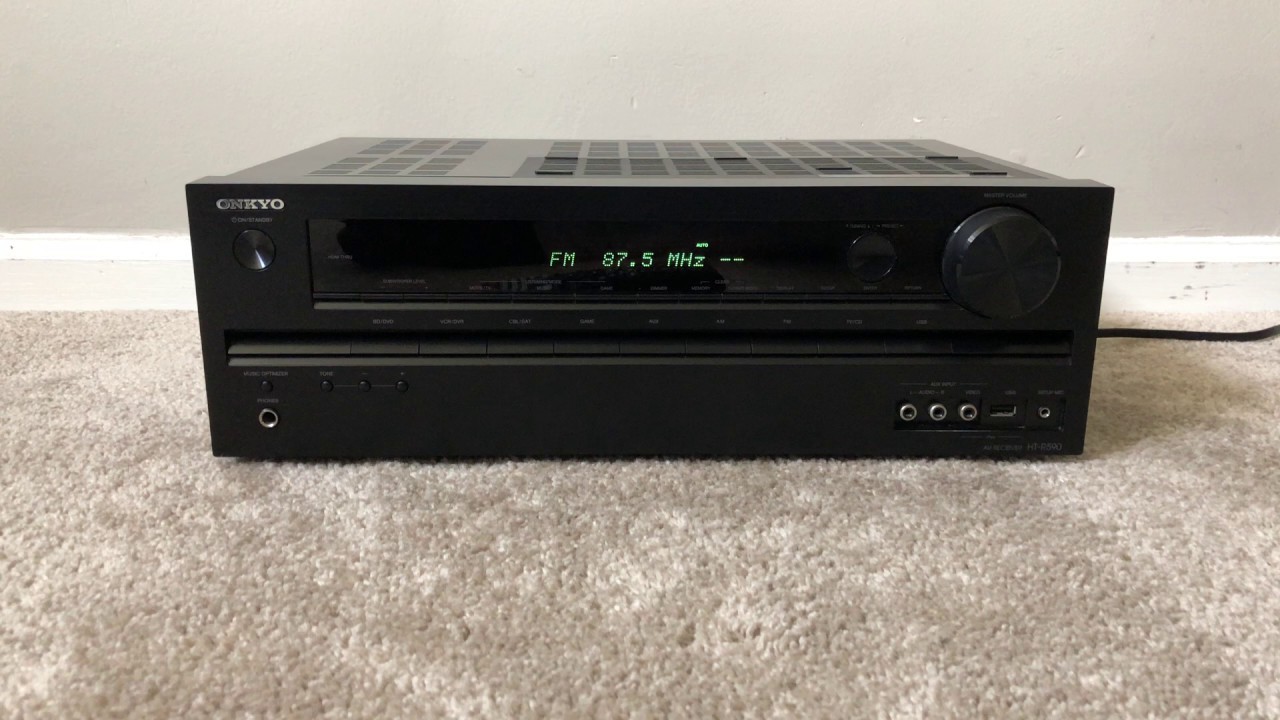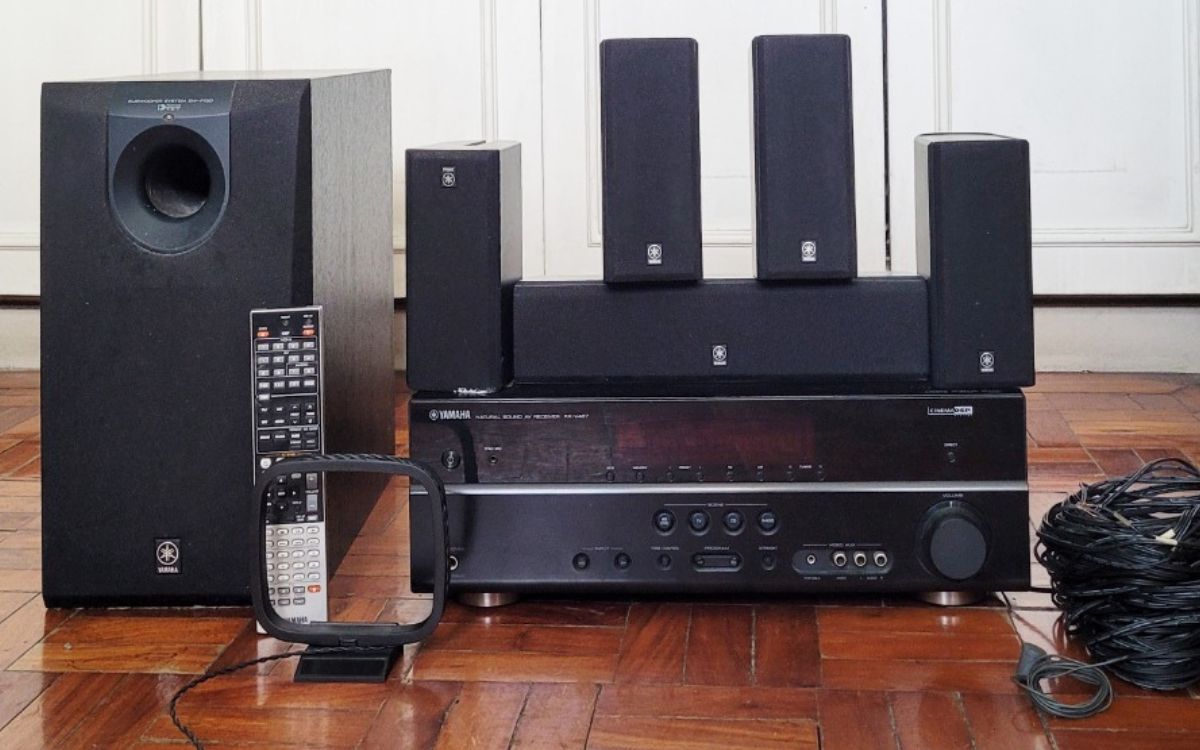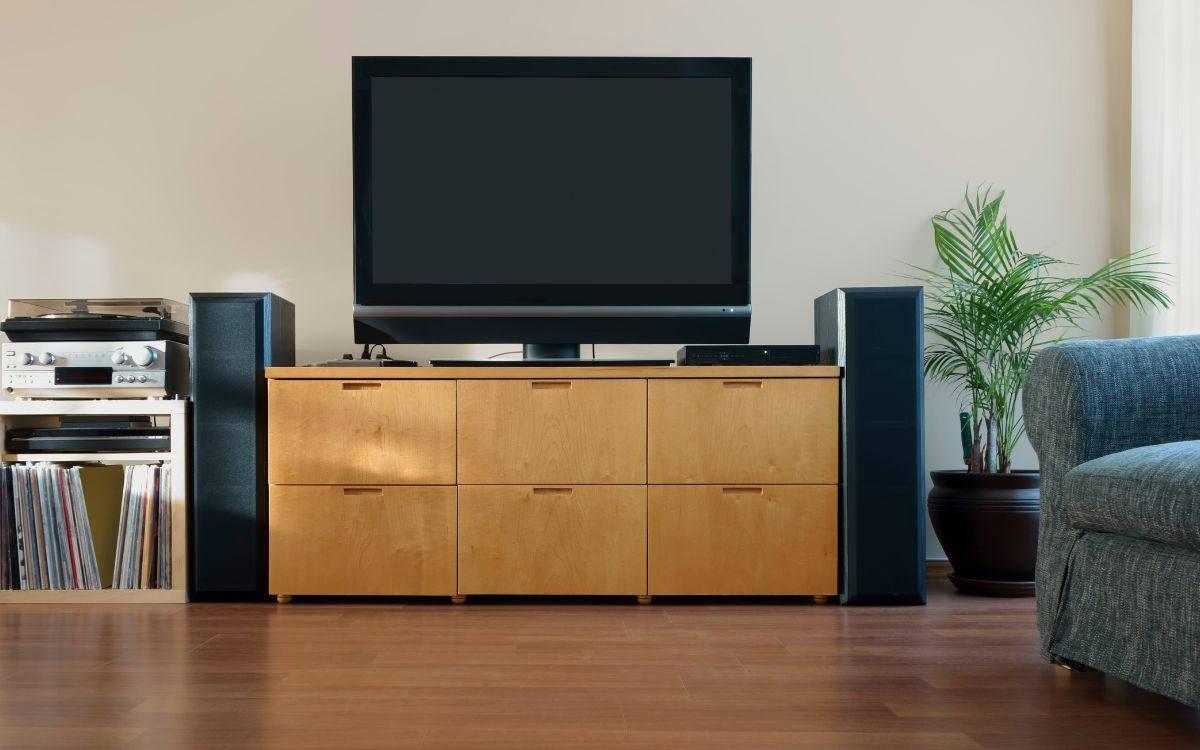Home>Production & Technology>Surround Sound>How Do You Connect Dot Or Alexa To Surround Sound


Surround Sound
How Do You Connect Dot Or Alexa To Surround Sound
Modified: January 22, 2024
Learn how to connect your Dot or Alexa device to surround sound system for an immersive audio experience. Step-by-step guide for seamless integration.
(Many of the links in this article redirect to a specific reviewed product. Your purchase of these products through affiliate links helps to generate commission for AudioLover.com, at no extra cost. Learn more)
Table of Contents
Introduction
Welcome to the world of Surround Sound! If you are a fan of immersive audio experiences, then you are in for a treat. Surround Sound systems are designed to bring movies, music, and games to life by creating a three-dimensional sound experience that surrounds the listener. The result is a more realistic and captivating audio experience that enhances your overall entertainment experience.
In recent years, voice-activated assistants like Amazon Echo’s Dot and Alexa have become increasingly popular. These smart speakers not only provide helpful information and assistance but also have the capability to connect to other devices, including Surround Sound systems. With the ability to control your audio setup hands-free, you can truly elevate your listening experience.
In this article, we will explore how you can connect your Dot or Alexa to a Surround Sound system. We will discuss different methods and provide step-by-step instructions so that you can enjoy the seamless integration of voice control and immersive audio.
So, whether you are hosting a movie night with friends or jamming out to your favorite tunes, let’s dive into the world of connecting your Dot or Alexa to Surround Sound.
Getting Started with Dot or Alexa
Before we jump into the process of connecting your Dot or Alexa to a Surround Sound system, let’s make sure you have everything you need to get started.
Firstly, you’ll need an Amazon Echo Dot or an Alexa-enabled device. These devices serve as the central hub for your voice control and connectivity. Make sure your device is set up and connected to your Wi-Fi network.
Next, ensure that you have a Surround Sound system with the necessary input options. Most modern Surround Sound systems come with various audio inputs such as Bluetooth, HDMI, or RCA cables. Check your system’s manual or specifications to determine the available input methods.
Lastly, ensure you have the appropriate audio cables if needed. This may include HDMI cables, optical cables, RCA cables, or audio adapters depending on the connections required by your Surround Sound system.
Once you have all the necessary components, you’re ready to start connecting your Dot or Alexa to your Surround Sound system.
In the next section, we will explore the ins and outs of Surround Sound systems and the various connection methods you can utilize to integrate your smart speaker.
Understanding Surround Sound Systems
Before we dive into the technicalities of connecting your Dot or Alexa to a Surround Sound system, let’s take a moment to understand the basics of Surround Sound technology.
A Surround Sound system is designed to create a multidimensional audio experience by distributing sound from multiple speakers positioned strategically around a room. The goal is to immerse the listener in a 360-degree sound field, enhancing the audio immersion and realism. The most common Surround Sound configurations are based on a 5.1 or 7.1 setup.
A 5.1 Surround Sound system consists of five primary speakers: a center channel, front left, front right, rear left, and rear right. These speakers are typically paired with a subwoofer to handle low-frequency effects. The “.1” refers to the subwoofer channel, which is responsible for delivering deep bass sounds.
A 7.1 Surround Sound system builds upon the 5.1 setup by adding two additional rear speakers, making a total of seven primary speakers. This configuration further enhances the audio positioning and spatial immersion.
Surround Sound systems can utilize various audio codecs and formats, such as Dolby Digital or DTS, to deliver high-quality audio. These formats are commonly found in movies, TV shows, and games, ensuring that you get the most out of your cinematic or gaming experience.
It is important to note that the connections and input options on Surround Sound systems may vary. This is why understanding your system’s compatibility and available input methods is crucial before attempting to connect your Dot or Alexa.
Now that we have a general understanding of Surround Sound systems, let’s move on to connecting your smart speaker to enjoy the benefits of voice-controlled audio.
Connecting Dot or Alexa to Surround Sound
Now that you have a good understanding of Surround Sound systems, let’s explore the different methods you can use to connect your Dot or Alexa to your audio setup. Depending on the available input options on your Surround Sound system, you can choose from various connection methods.
Method 1: Using Bluetooth:
If your Surround Sound system supports Bluetooth connectivity, this is one of the easiest methods to connect your Dot or Alexa. Simply put your Surround Sound system into pairing mode and use the Alexa app on your smartphone or tablet to connect your device via Bluetooth. Once connected, you can stream audio from your Dot or Alexa to your Surround Sound system wirelessly.
Method 2: Using Audio Cables:
If your Surround Sound system does not have Bluetooth capability or you prefer a wired connection, you can use audio cables to connect your Dot or Alexa. The specific cables required will depend on the input options available on your Surround Sound system. For example, you might need an HDMI cable, optical cable, or RCA cables. Connect the appropriate cable from the audio output of your Dot or Alexa to the corresponding input on your Surround Sound system. Make sure to select the correct input source on your Surround Sound system to receive audio from your Dot or Alexa.
Method 3: Using a Smart Home Hub:
If you have a smart home hub, such as a hub compatible with Zigbee or Z-Wave, you can integrate your Dot or Alexa with your Surround Sound system through the hub. This method allows for centralized control of multiple smart devices, including your audio setup. Follow the instructions provided with your smart home hub to connect and configure your Dot or Alexa to work with your Surround Sound system.
Remember to consult the user manuals or specifications for both your Dot or Alexa and your Surround Sound system to ensure compatibility and to understand the specific steps required for each method of connection.
After successfully connecting your Dot or Alexa to your Surround Sound system, you can enjoy the convenience of controlling your audio setup with voice commands. Whether you’re adjusting the volume, selecting a playlist, or even asking for information about the artist, you can do it all hands-free.
In the next section, we will address common troubleshooting issues that you may encounter during the connection process.
Method 1: Using Bluetooth
If your Surround Sound system supports Bluetooth connectivity, connecting your Dot or Alexa is as simple as pairing the two devices. Follow the steps below to establish a Bluetooth connection:
- Prepare your Surround Sound system: Put your Surround Sound system into pairing mode. This is typically done by pressing and holding the Bluetooth button on your system or accessing the Bluetooth settings in the system’s menu.
- Enable Bluetooth on your Dot or Alexa: Open the Alexa app on your smartphone or tablet and navigate to the settings menu. Select your Dot or Alexa device and look for the Bluetooth option. Enable Bluetooth on your device.
- Pair the devices: Once Bluetooth is enabled on your Dot or Alexa, it will search for available devices. In the Alexa app, select the Surround Sound system from the list of available devices. Follow any additional prompts, if necessary, to complete the pairing process.
- Set the input source: On your Surround Sound system, select the appropriate input source to receive audio from your Dot or Alexa via Bluetooth. This might be labeled as “Bluetooth” or “BT” on your system’s display or remote control.
- Start streaming: You’re now ready to stream audio from your Dot or Alexa to your Surround Sound system. Use voice commands or the Alexa app to play music, podcasts, or any other audio content, and enjoy the immersive sound experience from your Surround Sound system.
Keep in mind that the specific steps for Bluetooth pairing and input selection may vary depending on your Surround Sound system and Dot or Alexa model. Refer to the user manuals or support documentation for detailed instructions specific to your devices.
Using Bluetooth to connect your Dot or Alexa to your Surround Sound system offers the convenience of wireless audio streaming. You can easily control your audio experience hands-free and enjoy a seamless integration of voice commands and Surround Sound technology.
In the next section, we will explore an alternative method of connecting your Dot or Alexa to your audio setup using audio cables.
Method 2: Using Audio Cables
If your Surround Sound system does not support Bluetooth connectivity or you prefer a wired connection, you can use audio cables to connect your Dot or Alexa. The specific cables required will depend on the available input options on your Surround Sound system. Follow the steps below to connect your devices using audio cables:
- Determine the required audio cables: Check your Surround Sound system’s input options and identify the type of cables needed for connection. Common audio cables include HDMI cables, optical cables (TOSLINK), and RCA cables.
- Connect the cables: Begin by connecting one end of the audio cable to the audio output of your Dot or Alexa device. Then, connect the other end of the cable to the corresponding audio input on your Surround Sound system. For example, if your system has an HDMI input, connect the HDMI cable from your Dot or Alexa to the HDMI input on your system.
- Select the input source: On your Surround Sound system, select the input source you have connected your Dot or Alexa to. This can typically be done using the remote control or by accessing the system’s menu. Look for options such as “HDMI,” “OPTICAL,” or “AUX.”
- Configure settings: Depending on your Surround Sound system, you may need to adjust audio settings to ensure proper playback. Refer to the system’s user manual for instructions on configuring audio settings specific to your device.
- Enjoy your Surround Sound experience: With the audio cables connected and the input source selected, you can now start streaming audio from your Dot or Alexa to your Surround Sound system. Use voice commands or the Alexa app to play music, podcasts, or any other audio content, and enjoy the immersive sound experience from your Surround Sound system.
Remember to consult the user manuals or support documentation for your Dot or Alexa device and Surround Sound system to understand the specific audio cable requirements and setup instructions.
Using audio cables allows for a reliable and high-quality wired connection between your Dot or Alexa and the Surround Sound system. It ensures a consistent audio signal and eliminates any potential interference or latency issues that might occur with wireless connections.
In the next section, we will discuss another method that involves using a smart home hub for connecting your Dot or Alexa to your Surround Sound system.
Method 3: Using a Smart Home Hub
If you have a smart home hub in your setup, integrating your Dot or Alexa with your Surround Sound system becomes even more streamlined. With a smart home hub, you can centralize control of multiple smart devices, including your audio system. Here’s how you can connect your devices using a smart home hub:
- Set up your smart home hub: Follow the manufacturer’s instructions to set up and configure your smart home hub. This typically involves connecting it to your Wi-Fi network and installing any necessary companion apps on your smartphone or tablet.
- Connect your Dot or Alexa to the smart home hub: Open the Alexa app on your smartphone or tablet and navigate to the settings menu. Select your Dot or Alexa device and look for the option to connect it to your smart home hub. Follow the provided instructions to complete the integration process.
- Add your Surround Sound system to the smart home hub: Using the companion app for your smart home hub, add your Surround Sound system as a compatible device. This process may vary depending on the specific hub you are using. Refer to the manufacturer’s instructions for guidance on adding audio devices.
- Discover and configure the Surround Sound system: Once your smart home hub recognizes your Surround Sound system, you may need to configure its settings within the hub’s app. This may include selecting the correct audio channels, assigning specific inputs, or adjusting volume control options.
- Control your Surround Sound system with voice commands: With your Dot or Alexa connected to the smart home hub and your Surround Sound system configured, you can now use voice commands to control your audio setup. Simply speak to your Dot or Alexa, giving commands like “Alexa, play music on [Surround Sound system name]” or “Alexa, pause the audio.”
Using a smart home hub offers the convenience of centralized control and management of all your smart devices, including your Surround Sound system. By integrating your Dot or Alexa with the hub, you can easily control your audio experience with voice commands and enjoy a seamless smart home setup.
Remember to consult the user manuals and support documentation provided with your smart home hub, Dot or Alexa device, and Surround Sound system for specific setup instructions and compatibility requirements.
In the next section, we will address some common troubleshooting issues you may encounter during the connection process.
Troubleshooting Common Issues
While connecting your Dot or Alexa to your Surround Sound system is generally a straightforward process, you may encounter some common issues along the way. Here are a few troubleshooting steps you can take to resolve them:
Issue: No audio output from the Surround Sound system
Solution:
- Check the audio cables: Ensure that the audio cables are securely connected to both your Dot or Alexa and the corresponding input on your Surround Sound system.
- Verify the input source: Make sure you have selected the correct input source on your Surround Sound system to receive audio from your Dot or Alexa.
- Adjust audio settings: Check the audio settings on both your Dot or Alexa device and your Surround Sound system. Ensure that the volume is turned up and any relevant audio settings are properly configured.
Issue: Bluetooth pairing fails
Solution:
- Ensure compatibility: Confirm that your Surround Sound system supports Bluetooth connectivity and is in pairing mode. Also, ensure that your Dot or Alexa device has Bluetooth enabled.
- Reset pairing: Disconnect and reset the Bluetooth connection between your Dot or Alexa and your Surround Sound system. This may involve unpairing devices and starting the pairing process from scratch.
- Move devices closer: If the devices are too far apart, the Bluetooth signal may weaken. Try moving your Dot or Alexa closer to your Surround Sound system to improve connectivity.
Issue: Voice commands not recognized
Solution:
- Check network connection: Ensure that your Dot or Alexa device is connected to a stable Wi-Fi network, as voice commands require an internet connection for processing.
- Re-calibrate voice settings: Within the Alexa app, access your Dot or Alexa device settings and check the voice settings. Perform any necessary recalibration or retraining of voice recognition if the commands are consistently not being recognized.
- Eliminate background noise: Make sure there is minimal background noise in the room when issuing voice commands, as excessive noise can interfere with voice recognition.
If you encounter any other issues that cannot be resolved through troubleshooting, refer to the user manuals or support documentation for your Dot or Alexa device and Surround Sound system. Additionally, online forums and support communities can be valuable resources for finding solutions to specific problems.
Remember, patience and persistence are key when troubleshooting technical issues. With the right troubleshooting steps and resources, you can overcome any challenges and enjoy the seamless integration of your Dot or Alexa with your Surround Sound system.
Now that you have successfully connected your Dot or Alexa to your Surround Sound system, you can fully immerse yourself in an enhanced audio experience at your fingertips.
Conclusion
Connecting your Dot or Alexa to a Surround Sound system opens up a world of possibilities for immersive and hands-free audio control. Whether you choose to connect using Bluetooth, audio cables, or through a smart home hub, the process is relatively straightforward and can greatly enhance your audio experience.
Throughout this article, we’ve discussed the basics of Surround Sound systems and explored different methods of connecting your Dot or Alexa. By following the step-by-step instructions and troubleshooting tips provided, you can seamlessly integrate voice control and Surround Sound technology.
With your Dot or Alexa connected, you can effortlessly adjust the volume, play your favorite music, or even ask for information about the artist, all without lifting a finger. The convenience of voice-controlled audio combined with the immersive sound experience of Surround Sound creates a truly captivating entertainment setup in your home.
Remember to consult the user manuals and support documentation for your specific devices to ensure compatibility and find device-specific instructions if needed.
Now, it’s time to sit back, relax, and enjoy the rich, three-dimensional audio that your Surround Sound system, paired with your Dot or Alexa, can deliver. Whether you’re watching movies, playing games, or listening to music, you’ll never look at audio the same way again.


